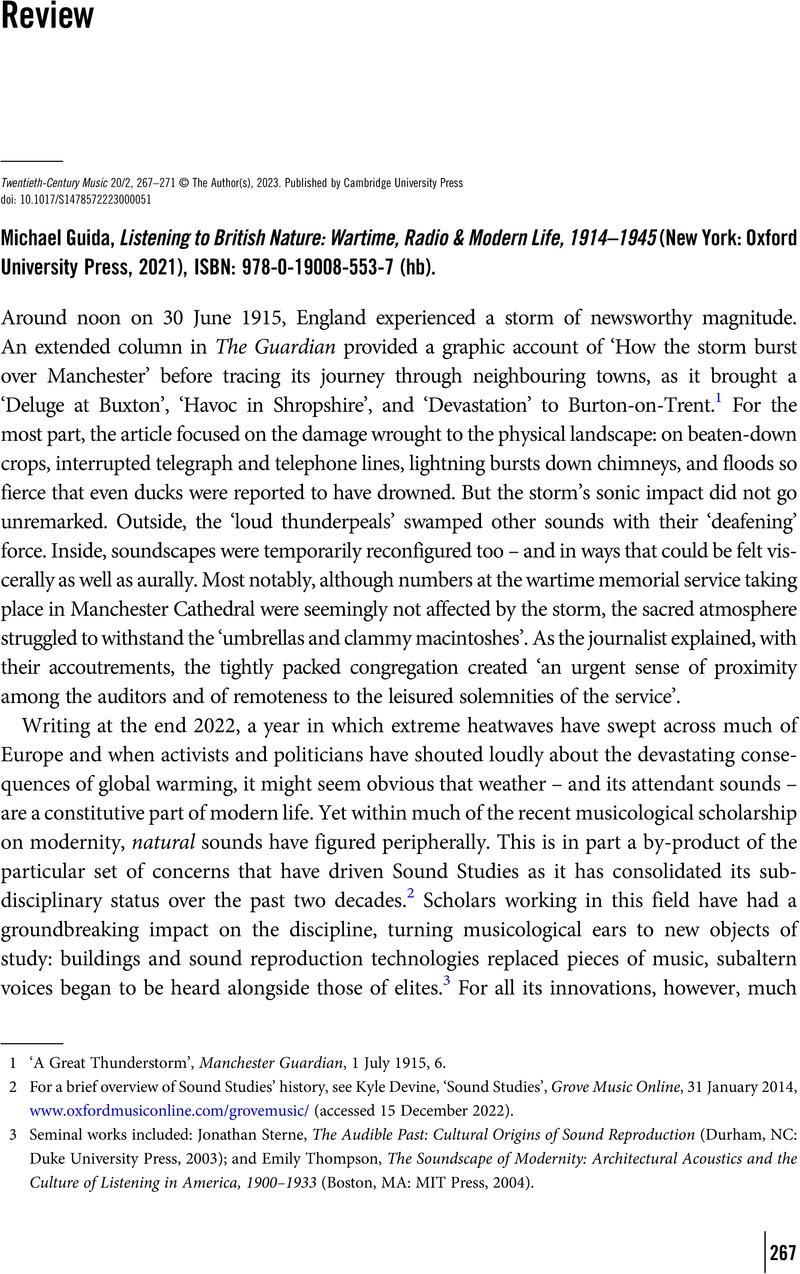No CrossRef data available.
Published online by Cambridge University Press: 22 March 2023

1 ‘A Great Thunderstorm’, Manchester Guardian, 1 July 1915, 6.
2 For a brief overview of Sound Studies’ history, see Kyle Devine, ‘Sound Studies’, Grove Music Online, 31 January 2014, www.oxfordmusiconline.com/grovemusic/ (accessed 15 December 2022).
3 Seminal works included: Sterne, Jonathan, The Audible Past: Cultural Origins of Sound Reproduction (Durham, NC: Duke University Press, 2003)Google Scholar; and Thompson, Emily, The Soundscape of Modernity: Architectural Acoustics and the Culture of Listening in America, 1900–1933 (Boston, MA: MIT Press, 2004)Google Scholar.
4 Leavis, F. R. and Thompson, Denys, Culture and the Environment: The Training of Critical Awareness (London: Chatto & Windus, 1933)Google Scholar.
5 In particular, see Bluemel, Kirstin and McCluskey, Michael, Rural Modernity in Britain: A Critical Intervention (Edinburgh: Edinburgh University Press, 2018)Google Scholar.
6 Russolo, Luigi, The Art of Noises, trans. Brown, Barclay (New York: Pendragon, 1986), 23Google Scholar.
7 English pastoral music's negative connotations are expounded and contextualized by in, Eric Saylor English Pastoral Music: From Arcadia to Utopia, 1990–1955 (Urbana, IL: University of Illinois Press, 2017), 8–10Google Scholar.
8 ‘Rain “Like a Cloudburst”’, Manchester Guardian, 11 September 1930, 11.
9 See, for example, Avery, Todd, Radio Modernism: Literature, Ethics, and the BBC, 1922–1938 (Burlington: Ashgate, 2006)Google Scholar; Hendy, David, ‘Painting with Sound: The Kaleidoscopic World of Lance Sieveking, a British Radio Modernist’, Twentieth Century British History 24/2 (2013), 169–200CrossRefGoogle Scholar; and Guthrie, Kate, The Art of Appreciation (Oakland, CA: University of California Press, 2021), 68–98Google Scholar.